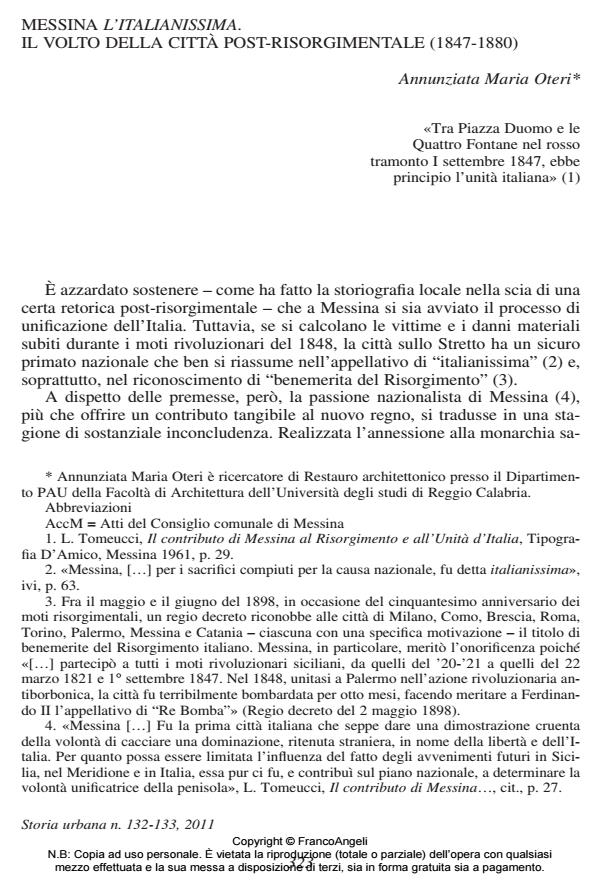Messina l'italianissima. Il volto della città post-risorgimentale (1847-1880)
Journal title STORIA URBANA
Author/s Annunziata Maria Oteri
Publishing Year 2012 Issue 2011/132
Language Italian Pages 43 P. 323-365 File size 6064 KB
DOI 10.3280/SU2011-132012
DOI is like a bar code for intellectual property: to have more infomation
click here
Below, you can see the article first page
If you want to buy this article in PDF format, you can do it, following the instructions to buy download credits

FrancoAngeli is member of Publishers International Linking Association, Inc (PILA), a not-for-profit association which run the CrossRef service enabling links to and from online scholarly content.
After the unification of Italy, due to the high number of victims and damage after the 1848 rebellion, Messina was named "Italianissima" and recognized as "benemerita - meritorious - of the Risorgimento". This intense participation in the Italian national cause, however, has not left evident traces in the urban re-organization of Messina, once part of the new Kingdom. Unlike in many other Italian cities, the early, ambitious projects of celebration of the heroes of the Risorgimento failed; rather, these projects were incorporated in the indolent process of urban growth due to the necessity, as in other places, of enlargement and redevelopment of the city. It is significant that, in Messina, the heroes of the Risorgimento were not celebrated within the urban fabric. Both before and after the 1908 earthquake, Vittorio Emanuele II, Garibaldi, Cavour, Mazzini were commemorated only in toponyomy, or in some modest busts placed in a remote corner of a public garden or within the main cemetery. The essay analyzes the reasons for this unfulfilled promise in urban growth. In particular, it studies the conditioning of the politicians, still connected to the old systems, and the insufficient authority of the liberal groups in opposition.
Keywords: Messina - The Risorgimento - Celebrations - Urban transformations
Annunziata Maria Oteri, Messina l'italianissima. Il volto della città post-risorgimentale (1847-1880) in "STORIA URBANA " 132/2011, pp 323-365, DOI: 10.3280/SU2011-132012